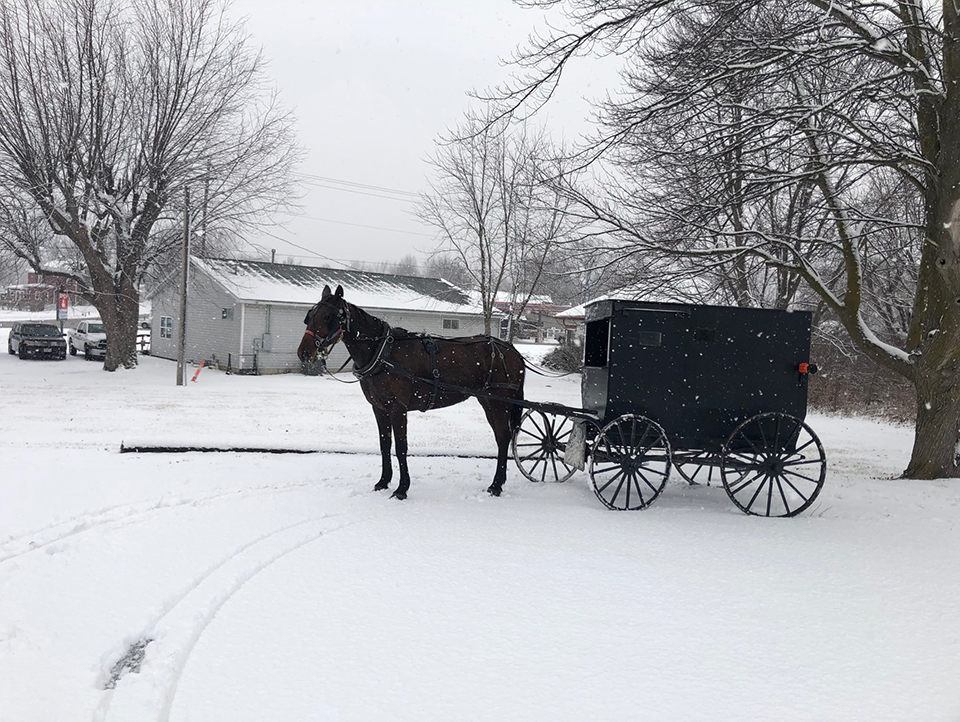Health Care in a Rural Setting: A SLU PA Student Sees a New Perspective on Patient Care
As a university in a major metropolitan area, it can sometimes be easy for students to forget that health care does not look exactly as it does at Saint Louis University (SLU) in every region of the country. In fact, SLU’s Physician Assistant (PA) program schedules each of its students to have at least one clinical rotation in a rural setting, so they can learn some of the unique aspects of providing care in a smaller town.
Recently, SLU PA student Arlynna Hendrix completed a clinical rotation in the town of Bowling Green, Missouri (population near 5,500) at a family care and pediatric clinic called Bowling Green Medical Group. Hendrix truly enjoyed getting learn more about health care in a rural environment.
“I loved it. I thought it was a wonderful experience,” Hendrix said. “The pace tends to be a little slower in smaller towns, and the people are generally very kind and patient. My preceptor had lived in the area for many years, so she often had an outside connection with her patients in the way of kids being classmates, adults going to the same church or having many mutual friends.”
While she did enjoy the experience and benefits of providing health care in a rural setting, Hendrix admitted that it was not without its unique challenges.
“In St. Louis there are many hospitals available in times of emergency or more intensive maintenance of medical conditions. There is also a large pool of specialists across all areas of medicine that patients can visit without having to travel too great a distance. This is not the case in rural areas. It’s not unusual to need to drive at least 30 -60 minutes just to reach the closest office that provides certain services,” Hendrix said.
While the deficit in specialists can provide challenges, it also allows the primary care provider to be more involved in managing a patient’s care, which is something that interests Hendrix.
“That is part of what attracts me to family practice in a rural area - the wide range of things you can see and the large number of interventions and procedures you can perform and manage,” Hendrix said.
One aspect of this clinical rotation that was particularly unique for Hendrix was that her clinic was located near a fairly large Amish population. This introduced Hendrix to scenarios that are not very common to other health care settings.
“Regarding working with the Amish population, major differences would be in areas of insurance, transportation, vaccination and electricity. Amish patients generally are all self-pay, and do not have insurance. This means that you have to be more cognizant of the cost of the services you are providing so that they can more effectively make decisions about what they would and would not want to have done,” Hendrix said. “The Amish travel by horse and buggy, but they will also hire drivers if they need to go a significant distance or need to get someplace faster than their own transport would allow, so this was somewhat of a limitation, but it wasn’t as significant a hurdle as I anticipated.”
As mentioned previously, another interesting characteristic about working with an Amish population was that they do not partake in vaccinations.
“A population not using vaccinations means the potential exists to see things such as whooping cough, mumps, rubella and other conditions for which the general population has less concern,” Hendrix said. “This is just something to keep in mind when you see a sick patient; if they have a cough, pertussis would be higher on your differential diagnosis list than it would be in a fully vaccinated patient.”
Hendrix, whose goal upon graduation is to work in a family care clinic in a rural area, advocated for the idea that any health care student could benefit from learning in a setting such as Bowling Green.
“You can learn different ways of approaching the same problem in different types of practices,” Hendrix said. “Also, I always think it’s a good idea to see things from a different perspective and try to understand the lives of those who have a different background than you.”
Find out more about SLU’s Physician Assistant Program
Saint Louis University is a Catholic, Jesuit institution that values academic excellence, life-changing research, compassionate health care, and a strong commitment to faith and service. Founded in 1818, the University fosters the intellectual and character development of nearly 13,000 students on two campuses in St. Louis and Madrid, Spain. Building on a legacy of more than 200 years, Saint Louis University continues to move forward with an unwavering commitment to a higher purpose, a greater good.
